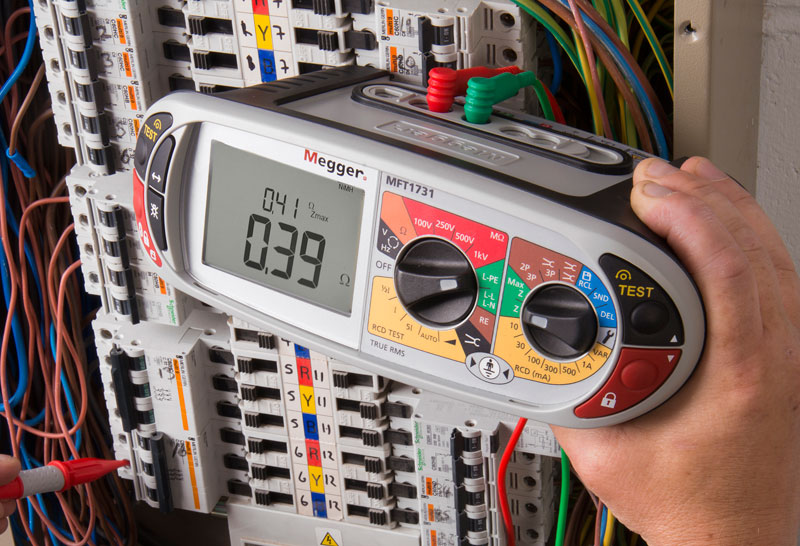
If the kit you use for installation testing is more than a few years old, it’s very likely that it’s costing you time and money, says Simon Wood of Megger.
Test equipment – if it’s made by a reputable manufacturer –rarely seems to die. It probably gets a bit battered over the years, but it just carries on working. So why spend money on replacing it?
The two very good reasons: the latest instruments have features that will save you a lot of time, and they have extra functionality that means you can tackle a wider range of work. In short, they’ll help you to boost your turnover and your profit.
But what sort of test kit should you buy?
Not long ago, the first decision was whether to buy a multifunction tester (MFT) that would handle all the tests needed on electrical installations, or to buy separate instruments for each test. The argument for separate instruments was that if one broke down, you could still do some testing with the others, whereas if your MFT failed, you wouldn’t be able to do any testing.
This was never a good argument as only being able to carry out some of the tests on an installation isn’t particularly useful. In addition, good quality modern instruments, including MFTs, are now so robust and reliable that breakdowns are exceptionally rare. Furthermore, an MFT is much easier to carry around than a bag full of separate instruments.
Crucially, an MFT costs significantly less than the separate instruments needed to provide similar functions. For these reasons, MFTs are now far and away the most popular choice.
They are, however, not all created equal and, if you’re investing your hard-earned cash in one, you’ll want to be sure you’re buying the best. All MFTs from reputable manufacturers will, of course, cover the basics, but remember it’s the little things that make the difference!
“Crucially, an MFT costs significantly less than the separate instruments needed to provide similar functions. For these reasons, MFTs are now far and away the most popular choice.”
Key features
Look for an MFT that won’t break if you drop it, and that is well protected electrically, so if you accidentally connect it to a live circuit with a dead-circuit test selected, it won’t be damaged. Easy test selection, with no fiddly menus, is another essential, as is a large backlit display you can read in any lighting conditions.
You’ll also find that ‘autostart’ on continuity, loop and RCD testing is a big benefit. With this, the test starts as soon as you apply the probes – you don’t need a “third hand” to press the test button. Automatic RCD testing is a big time saver, as it means you don’t need to keep walking between the instrument and the RCD, and an automatic Zmax function is another great convenience, as it stores the highest Zs value as you check at all of the sockets of a circuit.
For loop testing, you’ll want a choice of test methods, which should include a two-wire no-trip option so that you can carry out loop tests even when there’s no convenient access to a neutral.
You may think these advanced features are only available on expensive high-end instruments, but you’d be wrong! All of the features mentioned are provided on Megger’s new and very affordable entry-level MFT1711. And if you spend just a little extra, you can buy an instrument that will do even more.
Specialist applications
You could, for example, get an MFT that’s designed for use not only on single-phase installations but also on three-phase systems. These can check phase sequence, evaluate prospective short-circuit current up to 20kA, perform phase-to-phase loop testing at 415V, and test three-phase RCDs, even when no neutral connection is available.
The next step up is a top-of-the-range MFT that provides all this functionality, plus facilities for testing the earth electrode systems associated with TT systems for mobile homes, vehicle charging points, renewable energy installations and lightning protection systems.
Megger’s MFT1731, for example, offers a choice of two-pole, three-pole, stakeless and ART (attached rod technique) methods for measuring earth electrode resistance, which means that it’s always possible to use the most appropriate, most convenient and least time-consuming method, whatever the application.
Take a look at your test kit and be honest: can it provide all the benefits we’ve discussed in this article? If not, then it may be time to invest in a new one. You’ll very soon know that you’ve spent your money wisely and well!








